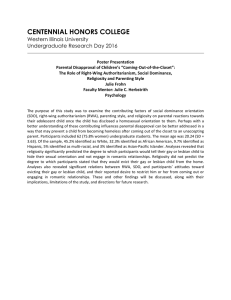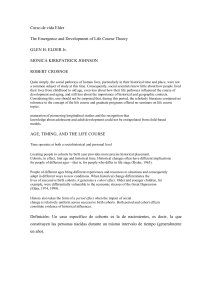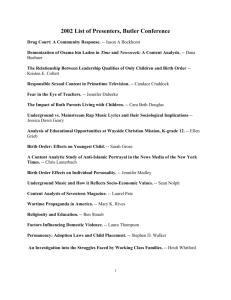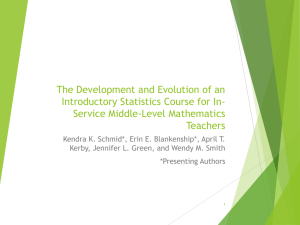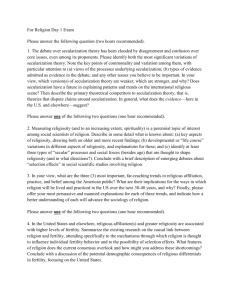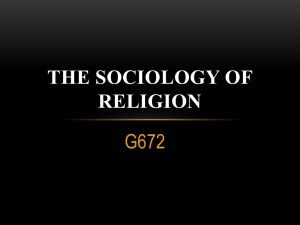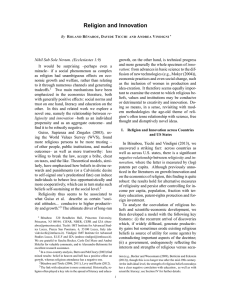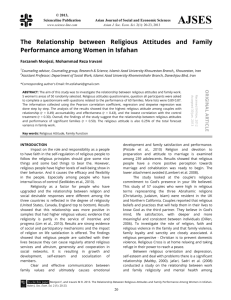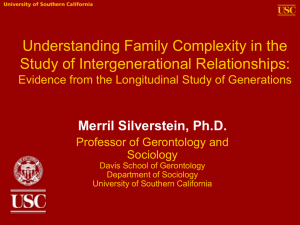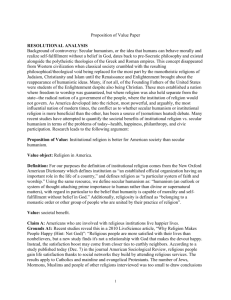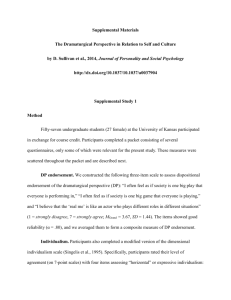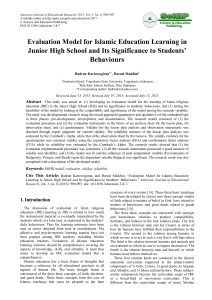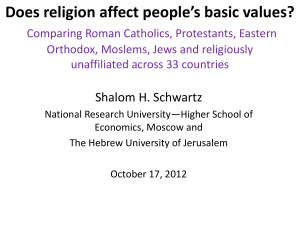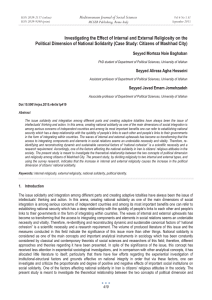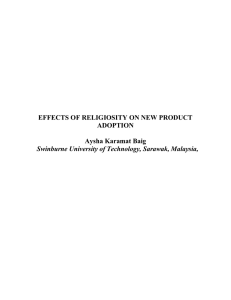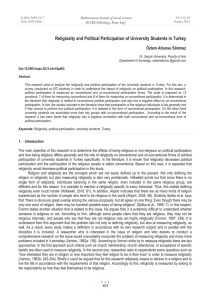Young people
advertisement
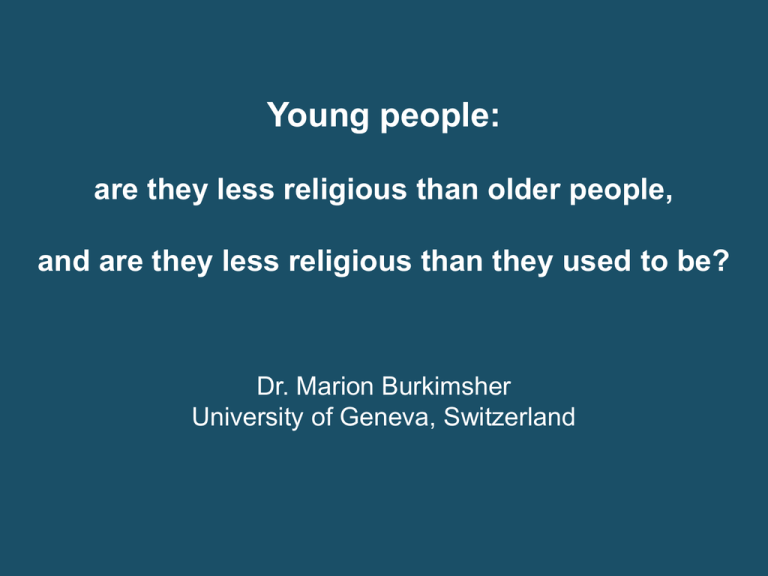
Young people: are they less religious than older people, and are they less religious than they used to be? Dr. Marion Burkimsher University of Geneva, Switzerland Young people 1. Are they less religious than older people? 2. Are they less religious than they used to be? It is likely that in most, perhaps all, the countries we come from, the answers to those questions are: Yes - young people are less religious than older people and Yes - young people are less religious than they used to be Problem: We assume that the pattern we see in our corner of the world is the same pattern everywhere. We extrapolate from what we see in our western world and presume that is the universal pattern. Having a preponderance of scientific literature published in English does not help! Solution: Let us examine the trends across more countries and see a broader picture… But for social scientists it might wreck models of correlates with religious beliefs / behaviour! And for Christian organisations it might challenge views on where is the greatest ‘need for evangelism’. Why study young people? • Barometer of health of an organisation • Changing age structure of society What is the definition of “young”? Aged 15/18 to 29 And “older”? Aged 50 and over Data sources World Values Survey, European Social Survey Both are cross-sectional sample surveys, designed to be representative of the population (including age structure) of each country studied. Weights are assigned to individuals. WVS 3-4 main waves (more to come) 1981-2; 1990; (1995);1999-2001 85 countries covered in at least one of the last 2 waves Total sample sizes are generally over 1000, so 200-500 respondents in under-30 (young) category ESS 3 waves to date - 2002, 2004, 2006 (more planned) 26 countries covered in at least one wave Total sample sizes around 2000, so under-30s number 400-500 Definition of “religious” • Wording/concepts come from European Christian culture • “How often do you attend religious services?” - at least once a month = ‘Attender’ • Self-reported attendance rates (may over- or under-estimate, depending on expectations of society) • Head counts of people in church can give lower estimates • NB: Includes any religion 1. Are young people less religious than older people? 1a. Comparison of countries at a particular time 1b. Do people become more religious as they get older? - Analysis of increase in religiosity with age - Trends over time of participation of different cohorts Country-to-country variations World Values Surveys of ~1995-2001 Scandinavia Western Europe Eastern Europe Balkans Ex-USSR Asia, Australasia Americas Africa Muslim 1a. Conclusion: it is not a universal pattern for older people to be more religious than younger people The countries where more younger people are participating in religion or where there is approximate equality include: • Some ex-Communist countries • African countries • Some Muslim/Asian countries Countries with the widest age differentials are: • Japan • Scandinavian countries • Western European countries 1b. So do people in general become more religious as they get older (in stable western societies)? So can we see cohorts getting more religious with age? So if we assume that cohorts do not in general become more religious as they get older: • What are the different relative levels of religious participation for different cohorts? and • Can we see any age effect at all? So is the age differential solely an attribute of cohort? Does our level of religiosity stay stable through life? 1b. Conclusions • Most of the age differential in religiosity stems from the cohort effect, ie. people were more religious in the past, and so the age pattern we see today is a relic of older generations being more religious, and their level has generally remained stable over time. • There is a significant age effect - a trough in participation in the mid-20s. Of 100 attenders in their late teens, only ~80 will remain so to their mid-20s. • They may return later, perhaps associated with marriage/ children. Longer period of adult singleness causing trough? • There may be another small trough: mid-life crisis in the 50s? • There are wide country-to-country differences in levels of religiosity and trends of secularisation. Country of residence is the primary determinant of religiosity differentials. 2. Are young people less religious than they used to be? Time trends of young people’s attendance rates Country-to-country comparisons (note different scales…) 2. Conclusion to question “Are young people less religious than they used to be?” • Yes, decline in some countries, in some periods, eg. western Europe up to 2000, some Asian countries (except China)… • No, increase in others, eg. Balkans, some ex-communist countries, African countries • Stability in others, some at a low level (eg. Scandinavia), others at a high level (eg. some Catholic countries) There is a great diversity of attendance levels and trends! This study describes patterns and trends but offers no explanations. Over to others to provide interpretation! But in Muslim countries men are more commonly attenders than women! Discussion points • Surprises? • Where geographically should we focus our outreach? • How are the Orthodox churches appealing to young people? • Has the church any rôle in a country with high HDI? • What age group should we focus on? • How would a church with more young people behave? • What can religion offer to happy, independent young adults? • Should a church try to appeal to all ages?
